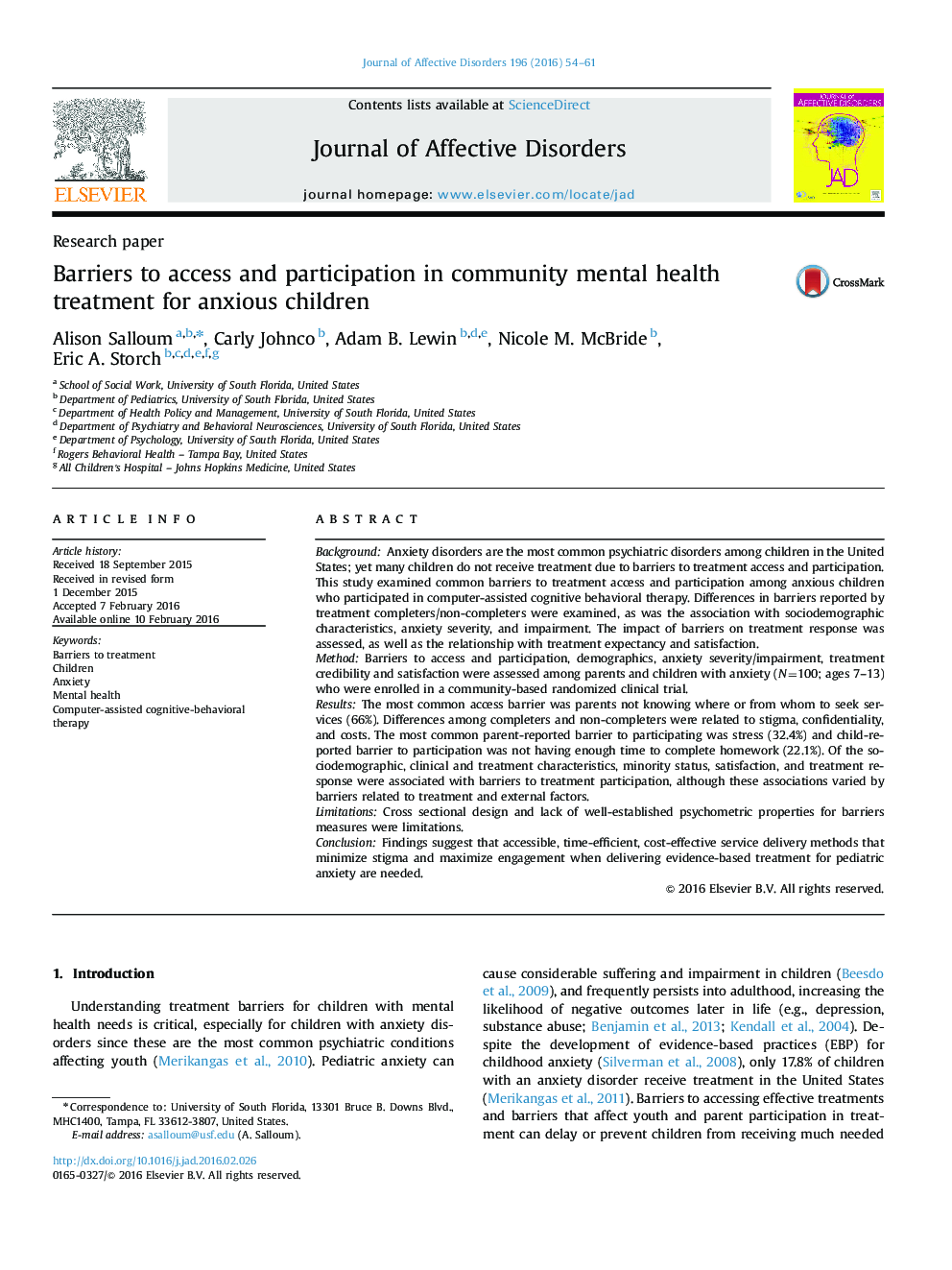| کد مقاله | کد نشریه | سال انتشار | مقاله انگلیسی | نسخه تمام متن |
|---|---|---|---|---|
| 6230309 | 1608129 | 2016 | 8 صفحه PDF | دانلود رایگان |
- Not knowing where or from whom to seek services prevents access to treatment.
- Stress for parents and time for children was a treatment participation barrier.
- Stigma, confidentiality, satisfaction may contribute to treatment non-completion.
- Computerized treatment for pediatric anxiety may be one approach to addressing treatment barriers.
BackgroundAnxiety disorders are the most common psychiatric disorders among children in the United States; yet many children do not receive treatment due to barriers to treatment access and participation. This study examined common barriers to treatment access and participation among anxious children who participated in computer-assisted cognitive behavioral therapy. Differences in barriers reported by treatment completers/non-completers were examined, as was the association with sociodemographic characteristics, anxiety severity, and impairment. The impact of barriers on treatment response was assessed, as well as the relationship with treatment expectancy and satisfaction.MethodBarriers to access and participation, demographics, anxiety severity/impairment, treatment credibility and satisfaction were assessed among parents and children with anxiety (N=100; ages 7-13) who were enrolled in a community-based randomized clinical trial.ResultsThe most common access barrier was parents not knowing where or from whom to seek services (66%). Differences among completers and non-completers were related to stigma, confidentiality, and costs. The most common parent-reported barrier to participating was stress (32.4%) and child-reported barrier to participation was not having enough time to complete homework (22.1%). Of the sociodemographic, clinical and treatment characteristics, minority status, satisfaction, and treatment response were associated with barriers to treatment participation, although these associations varied by barriers related to treatment and external factors.LimitationsCross sectional design and lack of well-established psychometric properties for barriers measures were limitations.ConclusionFindings suggest that accessible, time-efficient, cost-effective service delivery methods that minimize stigma and maximize engagement when delivering evidence-based treatment for pediatric anxiety are needed.
Journal: Journal of Affective Disorders - Volume 196, 15 May 2016, Pages 54-61
